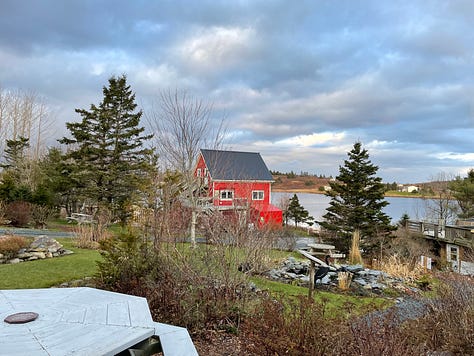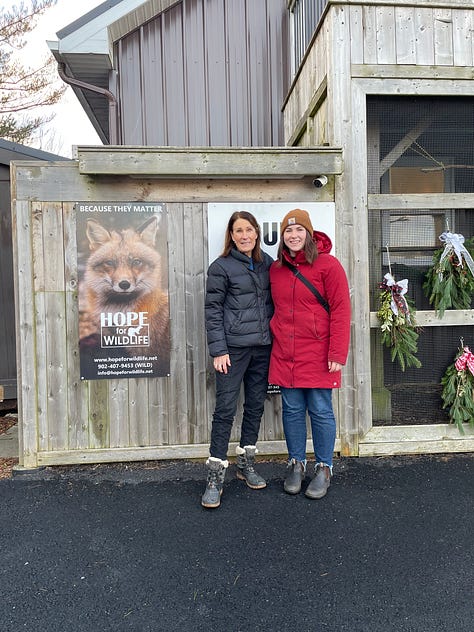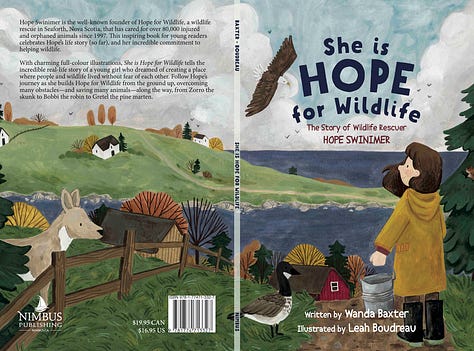Questions to a Children's book illustrator
A Q&A from a Uni Student to a Children's Book Illustrator
Earlier this month, a university student studying Graphic Design with an interest in children’s book illustration reached out to me. She asked if she could interview me for a project she was working on, and I immediately felt a sense of full-circle connection. Just four years ago, I was working on a similar project at a college on the other side of the world—only this time, I wasn’t the one asking the questions.
I happily agreed and took about a week to respond to all of her questions. I wanted to ensure I gave thoughtful, honest answers. It also became a valuable opportunity for me to reflect on my own career and the paths I’ve taken to get to where I am today. While I don’t claim to be an expert on how to build an illustration career, I was glad to share my personal experiences.
With her permission, I thought I’d share the Q&A here so you can get a glimpse into what my journey as an illustrator looked like when I was just starting out.
So, without further ado...
How and when did you discover your illustration style? Did you have any challenges discovering it?
It took me a few years to develop a consistent art style. I used to focus on more realistic drawing, but I found myself growing bored of my work. When I started to really contemplate what kind of jobs I could get as an artist, children's books definitely piqued my interest. However, at the time, I really wasn’t producing work fit for publishing.
I started to branch out of my comfort zone and discover new artists online, and I began collecting children’s books. I started experimenting, seeing what other illustrators I liked were doing, and trying to emulate their techniques. I didn’t go to school for art, so I really needed to learn through observation. When I found artists I really liked and thought, “I want to make that,” I would always ask myself, “What about this artist makes me feel this way?” I started to dissect the aspects of illustration I liked and didn’t like, which helped me grow my personal style from there.
I tried many, many mediums and many, many styles before getting where I am now. My Instagram is a great documentation of this; I have been posting since 2018 and have basically documented my whole artistic self-discovery, from realistic drawings to quirky children’s book illustrations.
Despite now having a consistent style, and for any artist, our style is in a constant state of change and development since we grow as artists with every piece of work we create. Discovering one's illustration style is definitely a journey, but it is also a journey that never really ends.
When illustrating a children's book, how do you go about starting it? Are there any important steps you take that's a must for you when illustrating?
So far, every book project I have worked on has varied slightly. Some art directors like to start with a meeting to discuss the manuscript and any ideas I may have before starting. For my most recent project, I simply received the manuscript with the project brief in an email, along with some illustration notes, and I got straight to work.
One step that I feel is extremely important for any project I work on is taking the time to properly do my research. This can mean different things depending on the project. It could involve researching places, settings, or even time periods featured in the book, checking out other books within the same or similar genre, or any other element that will help you develop the story you are working on.
For example, when I started my illustrations for She is Hope for Wildlife, a true story about a Canadian woman running a Wildlife Rehabilitation Center, I actually went to visit the property and met the woman I would be illustrating. I compiled a whole album of photos of animals, people, and places that would be featured in the story.



This may not sound like it, but it really can be the most fun stage of any project because this is where you start developing your ideas and creating the world of the story you are illustrating, and it can be really exciting! I’m also big on creating Pinterest boards for this stage, and depending on the project, I like to use Milanote to create mood boards if I feel it will help.
I am worried that my work won’t stand out in this competitive industry. Did you ever feel like this? If so, what advice would you give to someone feeling this way?
Feeling self-doubt or insecurity about your own style is a rite of passage for every artist. I don’t think these feelings ever fully go away—they certainly haven’t for me yet—but I believe they become easier to ignore over time.
Obviously, we all want to avoid looking generic. We want to stand out, but at the same time, we want to tick all the boxes publishers are looking for. If you look at today’s children's book industry, you’ll see that there are certain styles and standards that are widely accepted.
No matter your style, having a solid understanding of drawing principles is key. Being able to draw the human figure, understand perspective, shading, and lighting—all of these play a huge role in the quality of your work. If you have a good grasp on these fundamentals, any style can work, as long as you create it with confidence.
To dive a bit deeper, the internet and social media can be both a blessing and a curse. On one hand, they connect us to supportive communities and introduce us to artists we might never have discovered otherwise. On the other hand, they can also lead to self-doubt. It's so easy to start comparing ourselves to others and feeling like we're not good enough to be part of the industry. But every successful artist started small.
There’s also a misconception that an artist’s success is measured by the number of followers they have. For me, true success is defined by how fulfilled I feel when working on a project.
It’s important not to focus on the style you think you should be making, but rather on the work that brings you joy. You could have all the job offers in the world, but if they all ask you to create in a style you don’t enjoy, what kind of success is that?
What route did you take for your career and would you recommend this route for someone wanting to pursue the same or similar career path?
I actually also went to school for Graphic Design as well. I graduated in 2022 with a Diploma in Graphic Design and quickly realized that this was not the career for me. I got a regular job to pay my bills (which I actually still have now) and began building my illustration presence online, making connections, working on small jobs, designing and selling wholesale stationery, and building my portfolio.
I knew my end goal was to get into children’s book publishing, so for me, building a strong portfolio and making connections have been by far the most important steps. Social media can play a good role in getting you noticed, but it’s not essential—a strong portfolio can take you far on its own.
What made you want to choose this route and did you have any backup routes to achieve this career goal?
I always knew I wanted to be an illustrator; Graphic Design was actually supposed to be my backup, but that didn’t really work out. I knew I would need a job while transitioning into illustration, and I thought I’d like to work in a creative field. But as I mentioned earlier, it wasn’t the right path for me. So, I took an admin job and continued building my illustration career on the side. For me, this worked really well because I was able to save all my creative motivation for my illustration practice.
When you start out as an illustrator, expect to keep a part-time job for the first few years, or even longer if you prefer. Publishing can be tricky, because not every publisher wants to work with an illustrator without experience—but you can’t get experience without work. Don’t worry, the work will come. The start may be slow, but this is why having a strong portfolio is so important. It shows that, even without professional experience, you’re skilled at your craft.
Have you worked for any other agencies/companies in the past? If so, how did you discover them and what attracted you to them? Was there anything you were looking for in particular when it came to finding a job or agency?
The Plum Agency is my first agency, but I have worked with other companies and publishers.
I started searching for an agency back in the fall of 2022. At the time, I wasn’t entirely sure what I was doing or what I was looking for in an agency, so I ended up applying to every agency I could think of and find. I would not recommend doing this…
I was either rejected or never heard back from any of them. At the time, it felt awful to go through, but in hindsight, I think it was a blessing in disguise. It took me well over a year to have the courage to apply to any more agencies, but that time gave me the opportunity to work on a stronger portfolio, realize that I wanted to work specifically with a literary agency (not just any illustration agency), and find agencies that felt like a good fit for me.
I made a large spreadsheet with a list of all the literary agencies I was considering, rating them from one to ten based on how well I thought I would fit. I am a traditional media illustrator, which I noticed many agencies didn’t seem to represent—not all, but definitely a lot. The Plum Agency stood out to me because they had a wide variety of artists working in different mediums. On my spreadsheet, I even wrote “12/10!!” because I knew my work fit well with the artists they represented.
I believe the second time I sent out my portfolio, I only reached out to 4 or 5 agencies. A few months later, the agency I had a gut feeling about reached out to me.
What is one piece of advice you would give to students, like me, finishing their final year of university and wondering where to start out in the design industry? Any advice for finding an agency/work when graduate?
I don’t want to sound too repetitive, but make sure to focus on building your portfolio. Introduce yourself to anyone you think might offer an opportunity—any opportunity is valuable when you’re starting out, even the small ones.
Don’t undervalue your work or your time. It’s very common for artists to accept jobs for far less than they’re worth when they’re starting out—and I’m guilty of this myself. An agency will help secure you a fair wage, but until then, you are your own representation. Seeking proper wages shows that you are confident in your ability to create.
Research the agencies you’re considering. If you decide to pursue illustration, think about whether you want to work with a literary agency or an illustration agency. Read up on the agencies—do you share their values? Are they representing artists working with companies you’d like to collaborate with or doing the types of jobs you’re interested in? These are all important questions to ask yourself.
The final, and most important, piece of advice I have for you is this: Do not give up, and do not fear rejection. Working in a creative field can feel incredibly vulnerable. You’re sharing work that you’re proud of, but the truth is, not everyone is going to like what you make. Don’t let negativity or fear prevent you from reaching out to agencies, publishers, or accepting opportunities
And there you have it—questions from a university student to a children’s book illustrator. I hope you found this insightful and helpful. Stay tuned for more updates, and be sure to keep an eye out for my upcoming April newsletter!
Cheers my Lovelies,
Leah Bee xx










